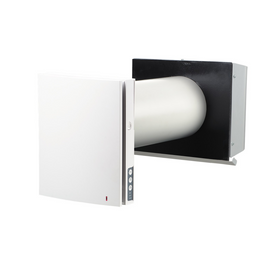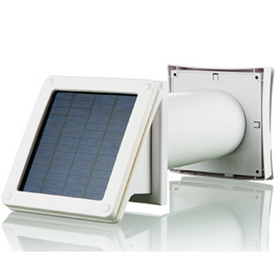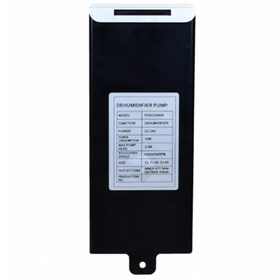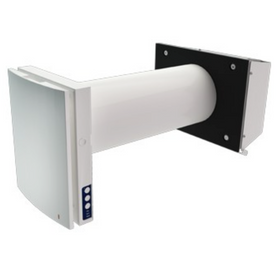
Air Filtration: Tips to a Healthy Home
Last Updated: Apr 7, 2025As an air quality consultant, I get the inevitable question from clients about filtration. “So this door-to-door salesman sold me this air filter, isn’t it great?” Or “Do you think I should buy this filter or that purifier?” My favorite, though, is, “We have pretty great air quality because we bought filter brand X.”
Unfortunately, that’s not quite how things work. Let’s look at it differently. Imagine you have a skunk running around inside your house, stinking things up. What is the first thing you should be doing: cleaning the air or trying to get rid of the skunk? The answer is always to deal with the source (get rid of the skunk). By cleaning the air, you manage the symptoms created by something, be it kids, cats, carpets, or whatever. Focusing on the source instead, you can reduce the overall air quality issues within the home, ideally negating the need for filtration. So the best filtration system has a house that doesn’t need filtration in the first place. The basics: remove carpets, remove shoes at the door, clean your ductwork every five years or after significant renovations, keep pets out of bedrooms, and hose kids down before you let them in the house.
But the truth is, sources can never really be removed entirely, so there are reasons for air filtration.
Table of Contents
- What Is an Air Filter?
- Do You Need a Furnace Filter?
- Which Furnace Filter Is Best?
- What Is the Best MERV Rating for Furnace Filters?
- Do HEPA Filters Remove Chemicals?
- Can Plants Improve Indoor Air Quality?
- Adding Ozone or Ions to the Air
- Does Ductwork Affect Air Quality?
- Do Air Purifiers Really Work?
- Bottom Line
What Is an Air Filter?
Air filters capture particulate that may be too small to see, or only in a sunbeam, and those that we can potentially breathe in and impact our respiratory system. These particulates can be biological, such as pollens, molds, soils, animal dander, bug bites, skin and hair cells, etc. The particulate can be inert such as construction dust (years after your build, it can still be there), fabrics, plastics, wood, and metals. The particulates can also be chemicals, such as aerosols, air fresheners, perfumes, cleaning products, greases, and oils.
Do You Need a Furnace Filter?
Filters are one of the essential pieces in your furnace's operation, as they are the filters to the lungs of your home. It is crucial to have the best filtration possible within the system.
Which Furnace Filter Is Best?
Furnace filters are rated on a MERV (Minimum Efficiency Reporting Value) scale out of 20. MERV is a rating created by ASHRAE (American Society of Heating, Refrigerating, Air Conditioning Engineers). A standard fiberglass filter typically scores a 1 out of 20, and it doesn’t stop anything from getting into the fan. Washable furnace filters rate a 3-4 out of 20, as water molecules are quite large in comparison (mist is 100 microns, while tobacco smoke is less than 1 micron). Electronic furnace filters rate a 4-8 MERV. However, CMHC's (Canada Mortgage and Housing Corporation) research has shown that electronic filters' efficiency drops by 60% after two weeks, thereby dropping it down to maybe a MERV 1 or 2. The electrically charged dust that does get through will also not settle as your furniture electrically repels it, keeping it in the breathing zone instead. 3M Filtrete Filters rate 12 out of 20 and work very well for the approximate $25 cost. These filters pull out large amounts of allergens from the air effectively and are an excellent value all around. A HEPA (High-Efficiency Particulate Air) filter scores 17 out of 20 and is the best available filtering system. Typically, these cost approximately $1,000 and up and require a competent HVAC tradesperson to install. The HEPA filters often come with pre-filters for larger particles, so the HEPA does not wear down as fast.
What Is the Best MERV Rating for Furnace Filters?
When choosing an air filter, the higher the MERV rating, the more particulates, and contaminants will be filtered out of your air. High-efficiency furnaces require higher volumes of airflow than low or mid-efficient models. Ensure that the filter used will allow the necessary airflow so you don't burn out the furnace fan motors prematurely. Changing dirty filters regularly also helps to maintain proper airflow. Talk with your heating contractor about the best filter possible that works with your system. The same ratings and effectiveness of filtration units also apply to portable room filters. These appliances would be for renters or those without ductwork in their homes.
Side note: there is another rating system out there, CADR (Clean Air Delivery Rate), created by the Association of Home Appliance Manufacturers. It can offer a comparison of different filters, as well. However, there are some limitations to the rating system that the MERV rating does take into consideration. So when researching, ask for both ratings.
Do HEPA Filters Remove Chemicals?
HEPA filters and other higher-rated filters can also come with carbon pre-filters, which remove chemicals and odors through absorption. Carbon filters can be mesh or made from coconut or bamboo. Washing them frequently can desorb them so you can reuse them. Refer to the instruction manual for details.
Can Plants Improve Indoor Air Quality?
Plants can help improve air quality within a home by absorbing specific chemicals. With their added benefits of creating oxygen, they can also help with air quality.

Adding Ozone or Ions to the Air
I get asked about purifiers a great deal: appliances that add ozone or ions to the air to clean it. Ion generators tear oxygen molecules apart and create extra ions that want to bond with stuff in the air, thereby theoretically taking the element out of the air. Elevated ions can be found around waterfalls and ocean beaches and can bring health benefits to us. The challenge is that there are no concerns in an ample ventilation space (outside, that is). How many ions are coming out of your appliance, for how long, for the size of the room? What does the appliance manufacturer say? Typically, nothing. As with anything, too much can be harmful, and that it could negatively impact your health.
Ozone, an older approach, creates O3instead of O2—and that being unstable wants to bond with elements in the air. The problem is that ozone is a carcinogen, and the US EPA feels that these are not healthy for you and your family. I would agree. Hydroxyl generators fall into the same category. At my chemical lab, I can tell if ozone or hydroxyl has been used in space. It does not help cleaning; it merely changes the chemicals to something different, not better. Remember, adding more stuff to the air does not address the problem and doesn’t make sense. Instead, remove things, first and foremost.
Ventilation & Air
Find a wide variety of researched and vetted home improvement products that help address your home's ventilation and air quality needs.

Vents TwinFresh Comfo RA1-50-2 Ductless Energy Recovery Ventilator
Vents
In Stock

Vents TwinFresh Expert RA1-50-2 Ductless Energy Recovery Ventilator
Vents
In Stock

Santa Fe Compact70 Dehumidifier - 4044110
Santa Fe
In Stock

Santa Fe UltraMD33 In-Wall Dehumidifier - 4044610
Santa Fe
Out of Stock

Innovative Dehumidifier IW25-5 In-Wall Dehumidifier
Innovative Dehumidifier
In Stock

Vents Solar Powered Ductless Fresh Air Wall Vent PSS 102
Vents
In Stock

AlorAir Sentinel HD55 Blue 113 Pint Commercial-Residential Dehumidifier
AlorAir
In Stock

Innovative Dehumidifier Condensate Pump for IW25-5 In-Wall Dehumidifier
Innovative Dehumidifier
In Stock

Vents TwinFresh Expert RW1-85-2 V.2 Ductless Energy Recovery Ventilator
Vents
In Stock

Santa Fe Small Hanging Kit - 4036695
Santa Fe
In Stock

Does Ductwork Affect Air Quality?
Ductwork is the lungs of your home. They move conditioned air throughout the house, promoting indoor air comfort. If ductwork is dirty, it delivers polluted air to our homes that we breathe in. Ductwork should be cleaned periodically, depending on living conditions. The more carpet, people, and pets, the more frequently ductwork should be cleaned.
Depending on where you live, the ductwork could be in your basement, your attic, your dirt crawlspace, or under your slab. First, have a look at it. Typically, every 3-5 years, the ductwork should be professionally cleaned. Between those times, use a digital camera to inspect the ductwork from the vent openings. Remember that the cold air return, the large vent in the middle of the house, will be the dirtiest, drawing air into the furnace. Typically, the debris field is in the first 4 feet so that a vacuum hose can reach the bulk of the material in the ducts.
Do Air Purifiers Really Work?
Of course, ventilation can help most of the time. Ventilation can be used to remove the point source concerns, such as cooking oils, moisture, and stale, dirty air from home. There are concerns about whether the outside air is more polluted than the inside air. Depending on where you live, this can be true. Where outdoor air is worse, ventilation needs to be filtered, and your H/ERV does come with basic filters. These need to be inspected and cleaned by you or your heating contractor periodically. Upgrade these filters if necessary. If the conditions are right, remember to open a window and let nature be the gold standard whenever possible.
Bottom Line
While filtration is essential, it is the last step in creating a healthy house. Manage the sources first; reduce their impact upon your indoor environment concerning particulate. Once that is under control, filtration can be considered, but typically for most people, it is not necessary. However, for those who are more sensitive, a good filtration system will make all the difference in the world as the final step. And don’t forget to change your filters regularly!
Stephen is a Building Biologist, Building Science Consultant, LEED Accredited Professional, and a Heritage Professional. Stephen is the owner of Your Healthy House and lives in Lakefield, ON, with his wife and two daughters.
Stephen Collette
Stephen Collette is a Building Biologist, Building Science Consultant, LEED Accredited Professional, and a Heritage Professional. Stephen is the owner of Your Healthy House and lives in Lakefield, ON with his wife and 2 daughters.
